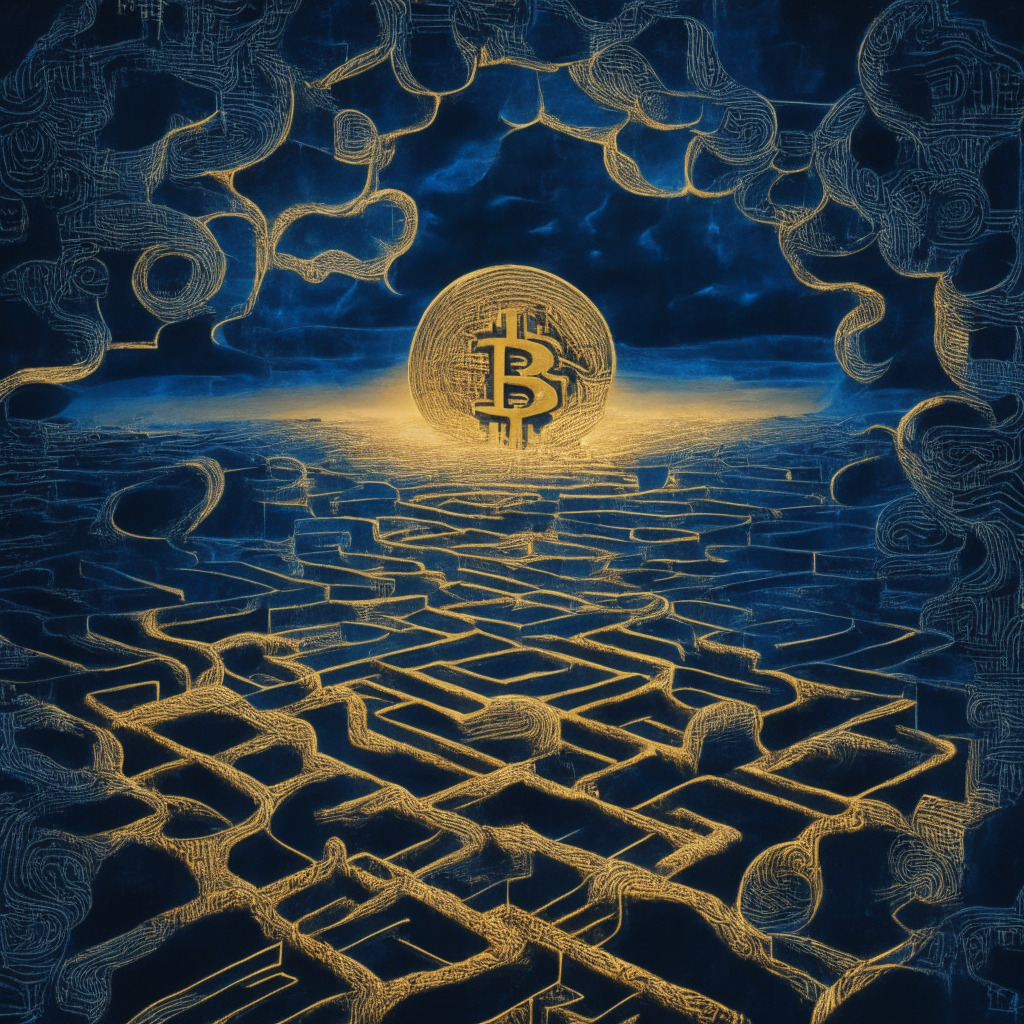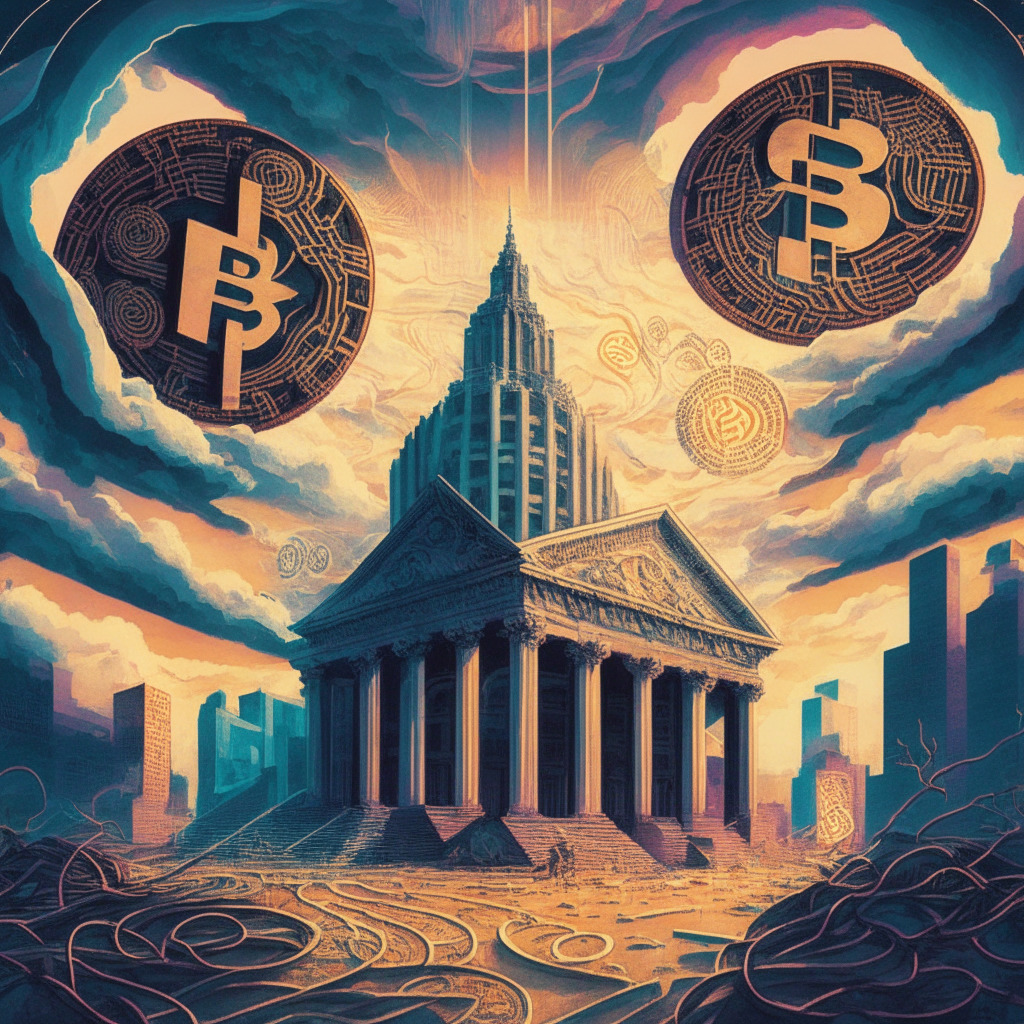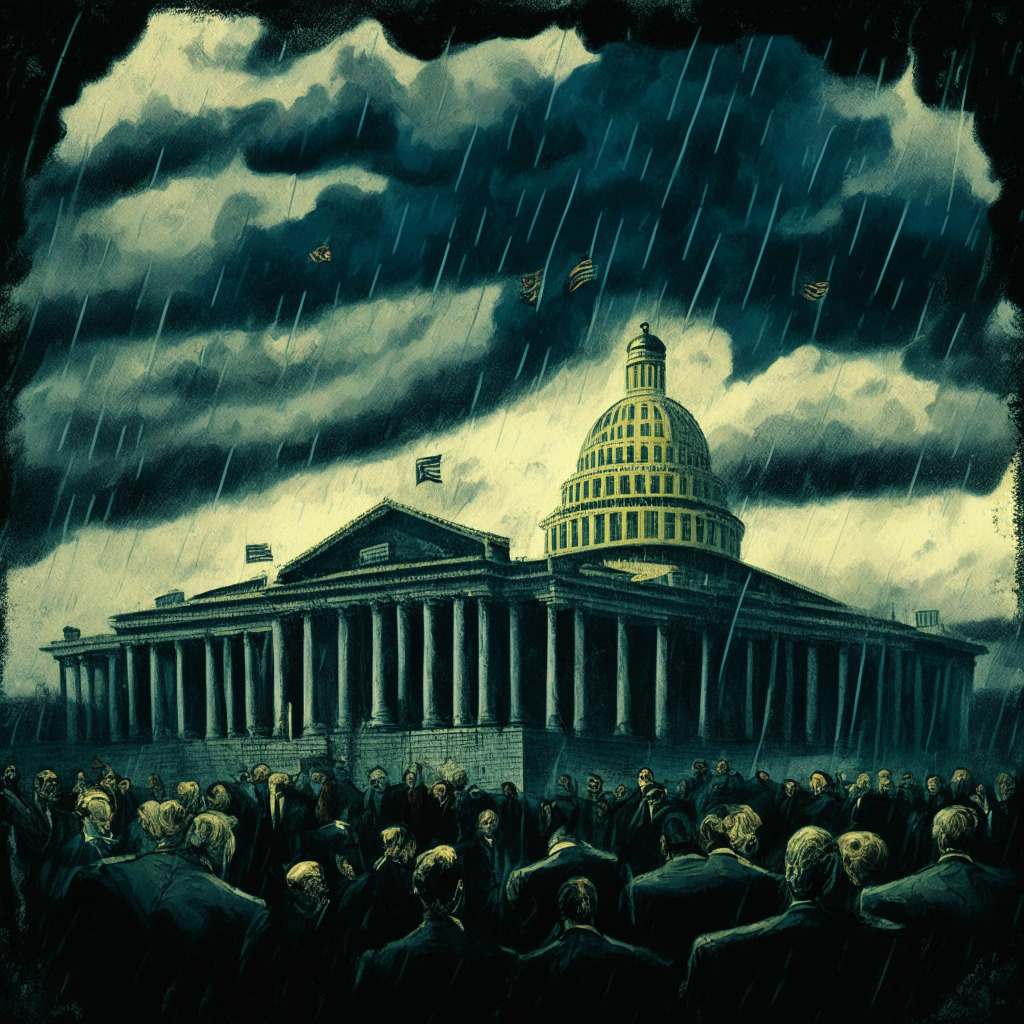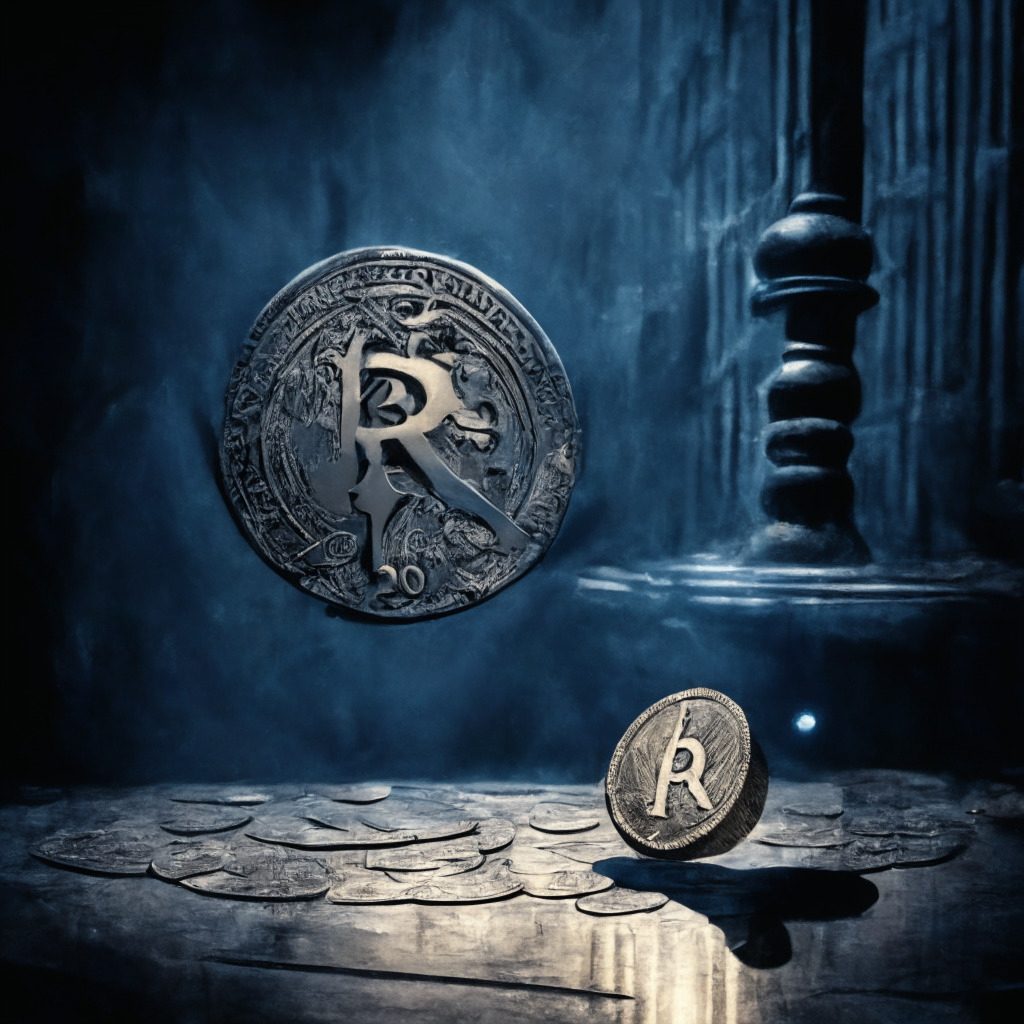“SWIFT has plans to use Chainlink’s Cross-Chain Interoperability Protocol to connect multiple networks, thereby creating a unique financial system for users. The importance of interoperability is fundamental in today’s digital financial system, where increasing blockchains and tokenization could cause fragmentation. With SWIFT’s strategy, the aim is to make investing more inclusive and affordable.”
Search Results for: ledger
Navigating the Labyrinth of Bitcoin: An Asset Worth Understanding
“Bitcoin is the best performing asset for seven out of the last ten years, yet wealth advisors are still reluctant to support investments in this asset class. While Bitcoin’s predictable, finite supply can provide a buffer against inflation, its frequent value fluctuations present challenges. Nonetheless, it is a robust construct that can drastically reshape monetary transactions, making it an intriguing asset to watch.”
Swift’s Blockchain Integration vs Central Bank Digital Currencies: A Comparative Analysis
Swift’s recent report asserts that short-term blockchain integration is a more feasible solution for market development than unifying Central Bank Digital Currencies and tokenized assets on one ledger. It suggests that connecting existing systems with blockchains addresses interoperability issues between diverse blockchain networks, improving efficiency and user experience.
Navigating the Promise and Perils of a Blockchain-Powered Future
“Blockchain technology presents unprecedented opportunities and potential pitfalls, transforming sectors like finance and supply chains, and democratizing financial access. However, there are security risks, regulatory challenges and concerns over data misuse and environmental impacts. Effective methods to capitalize this technology while mitigating risks are crucial.”
Shackles or Safeguards? Federal Reserve’s Crypto Oversight Fuels Global Expansion
The Federal Reserve’s intensified scrutiny of banks’ cryptocurrency activities has sparked criticism from Republican lawmakers who argue this deters institutions from participating in the digital asset landscape. The Fed’s new requirements may potentially suppress the progress of decentralized finance. Amidst this, U.S. regulations on digital assets remain unclear, pushing some crypto companies to explore alternative markets overseas. The discourse focuses on balancing effective supervision with fostering blockchain innovation.
Federal Reserve’s Tightened Grip on Crypto Sparks Republican Lawmakers’ Concerns
Republican lawmakers express concerns over the Federal Reserve’s intensified oversight on crypto and stablecoin activities, arguing it might block the progress of a legislative proposal aimed at regulating stablecoins. Lawmakers believe the increased scrutiny might dissuade financial institutions from entering the digital asset ecosystem.
Biden’s Crypto Tax Regulations: A Threat to Innovation or a Step Towards Transparency?
“Recently, the crypto market experienced a significant ripple due to new proposed crypto tax reporting regulations by President Joe Biden. Critics argue these regulations could stifle innovation and make crypto firms reluctant to operate within the United States.”
Unraveling the IRS Draft on Digital Asset Reporting: A Regulatory Leap or Misguided Move?
The US IRS has issued draft guidelines on reporting rules for digital asset brokers. Aimed at regulating the digital asset industry, this regulation intends to streamline tax reporting and prevent fraud, proposing to raise $28 billion in fresh tax over a decade. Critics label it as “misguided” and “an attack on the digital asset ecosystem.”
Deciphering Blockchain: A Dive into Decentralization, Potential Pitfalls, and Future Acceptance
“Blockchain and cryptocurrencies possess transformative potential for sectors including finance and healthcare, offering advantages like security, speed, lower costs and decentralization. However, they also present challenges: they’re prone to volatility and perceived as potential safe-havens for illicit activities, and may even require centralized regulation for mainstream acceptance.”
Transforming Bond Markets: Tokenization Prospects & Challenges in Hong Kong
The Hong Kong Monetary Authority is exploring the benefits and challenges of tokenizing bonds, a process aligning with existing legal infrastructure and improving operational efficiency via a common Distributed Ledger Technology platform. However, the report cautions that tokenization’s adoption is still in its “infancy”, with obstacles like aligning financial institutions on common solutions and updating legal regulations. This development frames Hong Kong’s shift towards becoming a crypto hub.
Harnessing Tokenization: HKMA’s Bold Steps and Uncharted Terrains in Bond Markets
“Hong Kong Monetary Authority (HKMA) has issued a $100 million tokenized green bond, proving the feasibility of Distributed Ledger Technology (DLT) in capital market transactions. DLT could help improve transaction speed, market fluidity, and transparency in bond markets. However, challenges of fragmentation across platforms, systems, and regulatory frameworks still demand attention.”
Federal Reserve Meeting Affects Bitcoin and Ether Values: Crypto Exchange Boosts Liquidity Security
“Bitcoins remain steady as attendees anticipate Jerome Powell’s speech in Jackson Hole. Expectations are tempered, however, by Bank of America’s doubt for strong policy directives from the meeting, causing Bitcoin and Ether values to slip. Meanwhile, Binance seeks to boost liquidity security for low-liquidity token crypto projects and new stablecoin nCOP is introduced on the Polygon network in Colombia.”
EU’s Data Act: A Double-Edged Sword for Blockchain and DeFi?
The European Union’s Data Act introduces regulations that could reshape the digital landscape, causing concern among blockchain experts due to provisions like a “kill switch” for smart contracts. This could have unforeseen consequences due to a lack of clarity on safe termination conditions, creating uncertainty in the world of blockchain and decentralized finance (DeFi).
Atomic Wallet Hack 2023: Unravelling the Crypto Security Dilemma Amid Rising Concerns
“The Atomic Wallet incident resulted in losses of a considerable $100 million, with recent accusations implying a Ukrainian group’s involvement. The breach situation is vague, with potential causes ranging from malware, an internal breach, to a man-in-the-middle attack. This highlights the crypto industry’s insecurity and the need for comprehensive security measures and regulation.”
North Korean Hacks vs. Blockchain Transparency: The Duel That Shapes Crypto Security
The FBI has put six Bitcoin wallets, affiliated with North Korea’s Lazarus Group, on its radar, highlighting their potential possession of around $40 million. The Group’s success in crypto exploits is counterbalanced by blockchain’s public-ledger technology which makes laundering assets increasingly difficult due to traceable and freezeable transactions.
Shift in Crypto Market Sentiment: XRP, Ripple Labs & the Impact of Legal Fallout
The current market shows traders favoring profit-oriented price movements over traditional buy-and-hold strategies. A shift that’s evident in XRP’s loss of gains, potentially linked to Ripple Labs’ controversial court ruling over the SEC. This shift introduces increased risk and uncertainty, requiring cautious and refined investor strategies.
Dubai: A New Crypto Frontier – The Clash of Opportunities and Risks in Uncharted Waters
“Komainu, a partnership between Nomura, Ledger, and CoinShares, has gained a license from the Virtual Asset Regulatory Authority to offer full custody services to its Dubai-based clients. This marks a crucial step forward, considering Dubai’s nascent regulatory environment for cryptocurrencies.”
Demystifying the Impact of Dubai’s Blockchain Embrace: Komainu’s VARA License Case Study
“Komainu, a joint venture between Nomura, CoinShares, and Ledger, has secured a full operating license from Dubai’s Virtual Asset Regulatory Authority (VARA). This achievement follows a rigorous three-stage approval process. Dubai’s recent pro-crypto regulations and support for blockchain innovations show its ambition to be a haven for crypto entrepreneurs.”
XRP20 Listing on Uniswap: Promises, Predictions and Precautions in the Crypto Landscape
“The crypto community anticipates the listing of XRP20 on Uniswap, with over 20 billion tokens already staked, promising yields of approximately 49% annually. This token mirrors XRP’s supply, but operates on the Ethereum blockchain and includes built-in staking features that may mitigate potential sell-off pressures.”
Navigating the Tumultuous Seas of XRP: A Tale of Lawsuits, Market Volatility, and Rising Adoption
XRP’s value has stabilized around $0.50, amidst ongoing legal proceedings with the SEC. Despite this, adoption of XRP is increasing, with companies like MoneyGram planning to utilize it for cross-border transactions. However, SEC’s continued appeal creates potential volatility.
Juggling Crypto Progress and Legal Hurdles: A Week in Review
“This week’s key crypto developments include less volatility for BTC and ETH compared to oil, Coinbase’s launch of bitcoin and ether futures trading, and the submission of paperwork for an Ethereum Strategy ETF by Valkyrie Funds. However, Binance Connect experienced a shutdown, illustrating user interface flaws. Also, Ledger facilitated crypto purchases with its PayPal integration, while PayPal launched its Cryptocurrency Hub.”
The Crypto Rollercoaster: Navigating Thrilling Highs, Crushing Lows and the Future of the Industry
“The ‘Greed & Fear’ index signifies a significant shift in the crypto sector, where recent Bitcoin resilience and optimistic judicial proceedings with the SEC indicate a promising future. Despite potential hurdles such as changing “custody rule” and the threat of quantum computers, Bitcoin’s technological prowess remains untouchable, fuelling innovation and unrestricted transactions.”
Securing the Gatekeepers: Safeguarding Your Cryptocurrency Private Keys
“Private keys in the digital asset universe are secure gatekeepers, providing access to your prized cryptocurrencies and data. Secure storage methods include hardware wallets, paper wallets, encrypted USB drives, cold storage, cryptocurrency vault services, password managers, and key-splitting. Your choice should consider your specific needs, tech expertise, and risk tolerance.”
Navigating Blockchain Revolution: Potential Boon or Pending Chaos?
“Blockchain technology promises a decentralized future, eliminating intermediaries and promoting transparency, data integrity, and traceability. It’s not without issues: irreversible errors, security vulnerabilities, and high energy consumption. The unclear regulatory landscape poses additional challenges and uncertainties for this potentially revolutionary technology.”
Decrypting Privacy: Navigating the Complexities of Blockchain and Cryptocurrency Security
“The rise of blockchain technology has revolutionized financial transactions but also raises privacy concerns. Transactions are logged on public ledgers, implying transactions can be traced back to specific addresses. Strategies for maintaining privacy include using encryption tools, maintaining wallet anonymity, and exploring privacy-focused cryptocurrencies, also considering DeFi platform exposures.”
HBAR Rises as FedNow Integrates Hedera’s Dropp: A Seismic Shift in Blockchain Landscape?
“Hedera Hashgraph’s digital token HBAR sees a value surge following its decentralized applications (dApps) Dropp’s listing by the US Federal Reserve’s payment service, FedNow. Dropp offers an affordable micropayments platform and infrastructure for the trending non-fungible token market, positioning Hedera’s applications on the brink of a significant shift in the blockchain technology landscape.”
Hedera Hashgraph HBAR: A Micropayment Powerhouse Attracting Market Attention or a Fleeting Trend?
“Hedera Hashgraph’s HBAR token sees over 15% surge following the inclusion of Dropp, a Hedera-based micropayments platform, on the FedNow. HBAR’s unique use of hashgraph consensus permits over 10k transactions every second. Its growth also aligns with a 288% jump in daily active accounts and a notable spike driven by non-fungible tokens (NFTs).”
Crypto Market Gains: Hedera’s Rally, Render’s Rebound, and the Potential of ApeCoin and Presales
“Cryptocurrency market sees minor gains led by altcoins HBAR, with Hedera integration into the US Federal Reserve’s payment service, FedNow, signaling promising trajectory, and RNDR token. Interest also looms over ApeCoin’s potential rally. Crypto presales emerge as a promising, yet high-risk, investment avenue.”
Shifting Fortunes as Hedera Outshines Bitcoin and Ethereum Amid Legal and Corporate Drama
“Hedera Hashgraph’s HBAR token saw a 15% surge following its integration into the U.S. Federal Reserve’s instant payment solution, FedNow. Meanwhile, Bitcoin and Ethereum remained stable, highlighting how different tokens react uniquely to market factors. Also, Bank of America believes PayPal’s new stablecoin, PYUSD, may struggle to gain adoption due to competition and changing market conditions.”
Decoding Federal Reserve’s Stance on DLT: Is It an Endorsement or Bare Necessity?
“Distributed Ledger Technology (DLT) becomes increasingly significant in financial future with FedNow featuring Dropp, a micropayments platform built on Hedera Hashgraph DLT. However, the Federal Reserve’s stance remains neutral, neither supporting nor endorsing DLT-powered companies, eliciting polarized opinions from the crypto community.”
Unmasking Blockchain: Unveiling Its Potentials and Inherent Limitations
“The world is swiftly embracing blockchain technology, reflected in the rising value of cryptocurrencies. Blockchain eliminates the need for a central authority, resulting in a transparent, secure environment, and reduced transaction times and costs. However, this technology has potential flaws including its complexity, potential for illicit activities, and substantial energy consumption.”
XRP Battles SEC Lawsuit and Market Tremors for a Potential Strong End to the Year
“XRP dips by 2% caused by SEC’s appeal against Ripple. Despite this, XRP has a 33% advance in the past month, highlighting potential for recovery. Ripple’s expansion and SEC’s uncertain appeal contribute to positivity. Also, XRP not being a security safeguards it from potential delistings, maintaining smooth US listings.”































